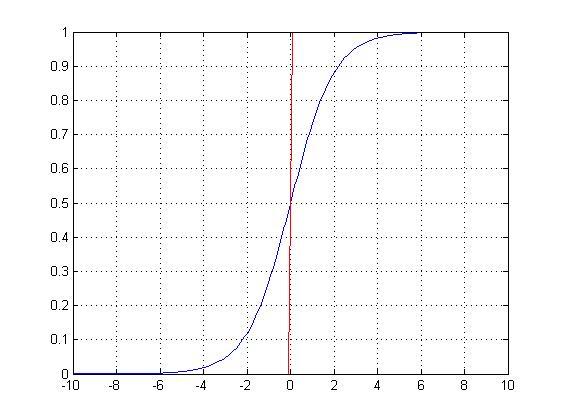基本概念
逻辑回归是一种广义的线性回归,常用于数据挖掘,疾病自动诊断,经济预测等领域。例如,探讨引发疾病的危险因素,并根据危险因素预测疾病发生的概率等。对于一个回归问题,给定的d个属性描述x=(x1;x2;x3;...;xd)所形成的的
那么我们实际上是去估计这里的 和
.
对于逻辑回归来说, 自变量既可以是连续的,也可以是分类的。多重线性回归直接的目标函数是包含了的最小二乘表达式,而logistic回归则是通过一个隐状态
,根据 p 和 1-p的大小决定因变量的值。
其中如果如果是对数几率函数则为logistic回归,如果是多项式函数就是多项式回归。
logistic回归的因变量可以是二分类的,也可以是多分类的,但是二分类的logistic回归用的更多。
一般来说,logistic回归的损失函数和阶跃响应函数很像,我们称为sigmode函数或者是对数几率函数,这个函数在神经网络的权值更新中也用的比较多,即
其中,。函数图像如下:

Logistic回归模型的适用条件
1 因变量为二分类的分类变量或某事件的发生率,并且是数值型变量。但是需要注意,重复计数现象指标不适用于Logistic回归。
2 残差和因变量都要服从二项分布。二项分布对应的是分类变量,所以不是正态分布,进而不是用最小二乘法,而是最大似然法来解决方程估计和检验问题。
3 自变量和Logistic概率是线性关系
4 各观测对象间相互独立。
实现问题
从实现语言上讲,matlab可以用回归函数包,python实现也比较多
楼主最近偏爱java,写个java实现吧。
import java.util.Arrays;
import java.util.Collections;
import java.util.List;
class Instance { //read data format
public int label;
public int[] x;
public Instance(int label, int[] x) {
this.label = label;
this.x = x;
}
public int getLabel() {
return label;
}
public int[] getX() {
return x;
}
}
public class Logistic {
/** the learning rate */
private double rate;
/** the weight to learn */
private double[] weights;
/** the number of iterations */
private int ITERATIONS = 3000;
public Logistic(int n) {
this.rate = 0.0001;
weights = new double[n];
}
private double sigmoid(double z) {
return 1 / (1 + Math.exp(-z));
}
public void train(List<Instance> instances) {
for (int n=0; n<ITERATIONS; n++) {
double lik = 0.0;
for (int i=0; i<instances.size(); i++) {
int[] x = instances.get(i).getX();
double predicted = classify(x);
int label = instances.get(i).getLabel();
for (int j=0; j<weights.length; j++) {
weights[j] = weights[j] + rate * (label - predicted) * x[j];
}
// not necessary for learning
lik += label * Math.log(classify(x)) + (1-label) * Math.log(1- classify(x));
}
System.out.println("iteration: " + n + " " + Arrays.toString(weights) + " mle: " + lik);
}
}
private double classify(int[] x) {
double logit = .0;
for (int i=0; i<weights.length;i++) {
logit += weights[i] * x[i];
}
return sigmoid(logit);
}
}实现的机制很简单,大家代码应该也容易看的懂吧。
最后想说逻辑回归看似是个回归问题,实际则是一个分类问题。